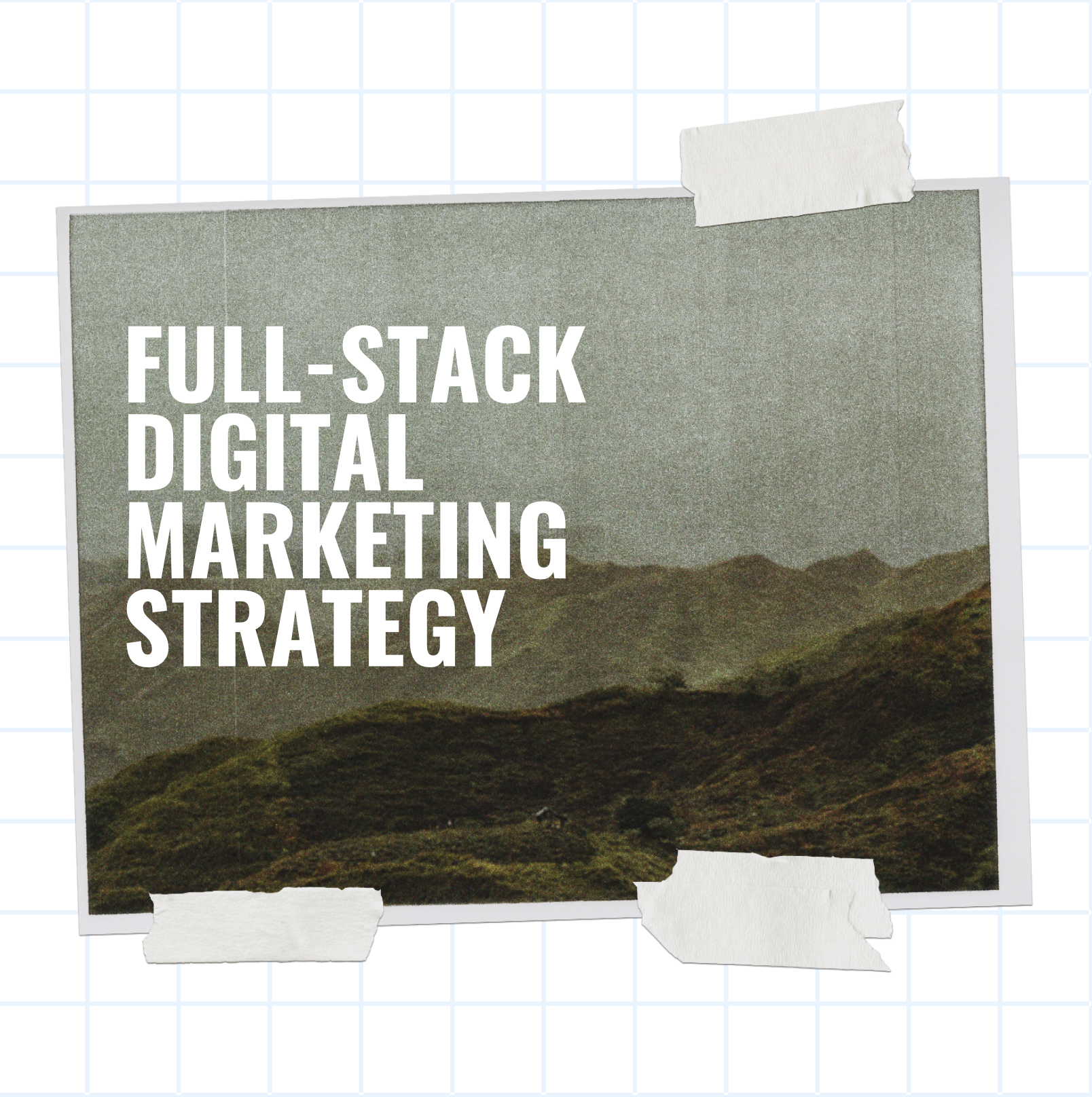Full-Stack Digital Marketing Strategy

You don't just sell a product you shape how people see it. You don't just run ads you create a brand people want to talk about.
Some of it you control through messaging and experience. The rest? It happens because you set the right stage for engagement.
Your brand isn't just what you say it's how people feel, interact, and share.
I use an AI-powered fitness coaching platform as an example to make the strategy clearer and easier to understand. It helps break down the process in a way that's simple to grasp and shows how each part of the strategy fits together.
1. Market Analysis & Business Positioning
⚡Why? Before marketing, we need to know who our customers are, what they need, and what competitors are offering.
Example: If wearable fitness tech is trending, we integrate smartwatch compatibility.
- Political: Regulations on health claims, GDPR compliance for data collection, taxation on digital services.
- Economic: Growing demand for affordable fitness solutions, subscription-based economy.
- Social: Increased focus on health & wellness, digital fitness adoption due to busy lifestyles.
- Technological: AI-powered fitness tracking, wearable integration (Apple Watch, Fitbit), AR-enhanced workout experiences.
- Company: Fitness platform enabling real-time coaching, community engagement, and AI-driven recommendations.
- Customer: Health-conscious individuals, fitness beginners, athletes, and those seeking personalized workout plans.
- Competitor: Online fitness apps (Nike Training Club, MyFitnessPal), local gyms, and YouTube fitness influencers.
2. Value Proposition & Business Model
⚡ Why? If users don't see value in our platform, they won't engage. Our business model must ensure sustainable revenue.
⚡Core Value Proposition
- For Coaches: Earn money by offering live classes, personal coaching, or subscription-based workout plans.
- For Users: Personalized, AI-driven workout plans with real-time feedback, community support, and interactive fitness challenges.
⚡Monetization Strategy (Multi-Sided Platform Model)
- Freemium Model: Free basic plans, with paid premium plans for exclusive content and live coaching.
- Commission Model: Take a percentage of earnings from fitness coaches.
- Subscription Model: Monthly/annual subscriptions for personalized AI-driven training.
- Ad Revenue: Search ads & sponsored content from fitness brands.
- Partnerships: Integration with fitness equipment brands, gyms, and health product companies.
3. Marketing Communication & Multi-Channel Strategy
⚡Segmentation, Targeting & Positioning (STP Model)
- Segmentation:
- Demographics: 20-45 years, urban professionals, fitness-conscious individuals.
- Behavioral: Tech-savvy, health-conscious, active social media users.
- Geographics: Focus on tier-1 and tier-2 cities with higher disposable incomes.
- Targeting: Aspiring fitness enthusiasts & professionals seeking structured guidance.
- Positioning: The most personalized, AI-powered, and community-driven fitness coaching experience.
4. Full-Funnel Marketing Strategy (AIDA Model + Customer Decision Journey)
Stage Objective Tactics & Channels
Awareness (Attention) Build brand awareness & recall. Influencer marketing, programmatic display ads, SEO, brand storytelling.
Interest (Consideration) Educate and engage the audience. Content marketing, YouTube & Instagram tutorials, free webinars, community building.
Desire (Decision-Making) Encourage users to take action. Retargeting ads, social proof, testimonials, AI-driven personalization.
Action (Conversion & Retention) Drive sign-ups and subscriptions. PPC ads, referral marketing, freemium model, push notifications, upselling.
5. Performance Marketing & Search Engine Optimization (SEO & SEM)
⚡Search Engine Marketing (SEM) & PPC Strategy
- Pay-Per-Click Ads: Google Ads targeting fitness-related queries.
- Search ROI Optimization: Bid adjustment strategies, keyword optimization, ad copy A/B testing.
- Retargeting & Display Ads: Dynamic retargeting for visitors who interacted with the site.
⚡ SEO & Organic Growth
- Keyword Strategy: Optimize for long-tail queries ("best online fitness coaching," "AI fitness trainer").
- Content Strategy: Blog posts, video guides, infographics, and fitness calculators to drive organic traffic.
- Backlink Strategy: Guest posts, collaborations with fitness bloggers, industry mentions.
6. AI-Powered Personalization & Recommendation System
⚡AI-Driven Personalization
- AI-Based Workout Plans: Personalized recommendations based on user goals & previous activity.
- Chatbots & Virtual Assistants: 24/7 AI-powered fitness consultations.
- Predictive Analytics: Machine learning to suggest next workout routines based on user engagement.
⚡Network Effects & Growth Loops
- Positive Same-Side Effect: More users increase engagement within the platform.
- Cross-Side Effects: More fitness coaches attract more users, and vice versa.
- Chicken-and-Egg Challenge: Solve by onboarding coaches first with incentives & launching free trial workouts.
7. Social Media & Influencer Marketing
⚡Content & Community Strategy
- Instagram & TikTok: Viral fitness challenges, micro-influencer collaborations.
- YouTube: Long-form educational content & fitness transformations.
- Facebook Groups: Community-building with live Q&As & expert-led discussions.
- UGC (User-Generated Content): Encourage users to post workout results using branded hashtags.
⚡Paid Social Advertising
- Lookalike Audiences: Target users similar to existing customers on Meta Ads.
- Influencer-Driven Campaigns: Partner with fitness creators for authentic brand advocacy.
- A/B Testing on Ad Creatives: Optimize engagement & conversion rates.
8. Multi-Device & Mobile Marketing Strategy
⚡Mobile Marketing Technologies
- Mobile Websites & Apps: Optimize for seamless UX & high-speed performance.
- SMS & Push Notifications: Drive re-engagement with personalized reminders.
- QR Codes & Mobile Wallets: Easy checkout for premium plans & loyalty rewards.
- Geo-Targeting & Augmented Reality: Personalized local fitness class suggestions & AR workout guides.
⚡Proximity & Location-Based Marketing
- Geo-Conquesting: Target users near competitor gyms with exclusive app promotions.
- Smartwatch Integration: Fitness tracking via Apple Health & Google Fit.
9. Multi-Sided Platforms: Pricing, Growth & Governance
⚡Pricing Models & Governance
- Freemium → Subscription Upsell strategy.
- Dynamic Pricing based on user engagement & demand.
- Governance: AI-driven moderation of content & reviews to maintain platform trust.
⚡Growth Strategies
- Referral Program: Reward-based referral for bringing in new users.
- Affiliate Partnerships: Partner with health & wellness brands for co-marketing.
10. Measuring Success: KPIs & ROI Metrics
Category KPIs to Track
Brand Awareness Reach, impressions, brand mentions.
Engagement Click-through rate (CTR), social shares, average session duration.
Conversions Sign-ups, subscription rate, customer acquisition cost (CAC).
Customer Retention Churn rate, LTV, repeat purchases.
Revenue Growth ARPU (Average Revenue per User), MRR (Monthly Recurring Revenue).